As winter takes a grip on the UK, the need for warmth on the hills becomes crucial.
Down has been the traditional insulating material for outdoor enthusiasts: it’s light, it packs away into a very small space and it’s warm. But it has one big drawback: it’s not good in the wet, and Britain is a wet place.
Down is pretty much unbeatable on those cold, dry days when the temperature drops, but when the rain falls, it shows its Achilles’ heel by losing much of its insulating properties when wet.
Berghaus is trying to tackle this problem with the introduction of its hydrophobic down – with some success. But many will still turn to synthetic materials in wet conditions, with the certainty that the polyester filaments will not give up the ghost when the heavens open.
We put nine jackets to the test, including both down and synthetic samples. We rated them for their warmth and windproofing properties, but we also looked at how they packed down and what features they have.
While the ratings tell a tale, it’s important to look at how suitable each jacket is for the use you want to put it to. A mountain marathoner will want a different garment from someone spending much of the day belaying a climbing partner.
Berghaus Furnace III Hydrodown Jacket
Colour: red
Weight: 320g
Price: £170
Material: nylon
Insulating material: 700 fill hydrophobic goose down (90 per cent); feather (10 per cent)
Country of manufacture: China
Recommended wash: 30C non-biological detergent
The latest incarnation of Berghaus’s Furnace down jacket has been developed using the MtnHaus design team, with body-mapped down fill, treated to increase its usefulness when wet – a notable problem with down, the conventional version of which quickly loses its insulating properties when wet.
We expect to see a growing use of hydrophobic down in the future, but this Berghaus jacket is a good looking early example of its use.
It’s minimalist in design, with numerous through-stitched panels to hold the down in place. There are two zipped handwarmer pockets and, like many of the jackets in this test, it has elasticated cuffs.
There is a baffle behind the full-length zip to keep out the wind, and the hem has a drawcord to allow tightening to minimise draughts. There is a soft chin guard.
The Pertex Microlight shell was very good at keeping out the wind and kept some of the rain out.
We tried the Furnace III in a variety of situations, from strenuous Lake District expeditions to more sedentary spells and it performed well. There was some loss of insulation when the down got wet; don’t forget, moisture comes from within in the form of perspiration as well as from the outside, and parts of the jacket showed some signs the down was clumping, most notably in the lower back where our rucksack compressed it most.
However, the Furnace III still kept a large part of its insulation when damp and recovered well after a period of drying.
Warmth 25/30
Windblocking 23/30
Packability 4/5
Features 2/5
Quality 4/10
Value for money 12/20
Total score: 70/100
Craghoppers Akim Jacket
Colour: black
Weight: 424g
Price: £130
Material: shell, nylon; lining polyester
Insulating material: 500 fill down (90 per cent); feather (10 per cent)
Country of manufacture: China
Recommended wash: 30C detergent wash
The least expensive of the down jackets in our test, the Akim had slightly less fill than others but still performed well.
The insulation is again body mapped to provide warmth where it’s most needed.
The full-length zip has a baffle and the hem has a drawcord with two adjusters. Cuffs are elasticated.
The Akim has two zipped handwarmer pockets and an internal zipped pocket which turns inside out to become a stuffsack for the jacket. Although Craghoppers don’t say it, this actually makes a nice pillow if you’re camping.
The Akim doesn’t pack down quite as small as some of the down jackets, but it will still compress into a fairly small space in your rucksack when not in use.
The jacket’s shell has SmartDry technology for water repellency and stain resistance.
Warmth 22/30
Windblocking 20/30
Packability 3/5
Features 2/5
Quality 4/10
Value for money 14/20
Total score: 62/100
Helly Hansen Peregrine Jacket
Colour: red
Weight: 1,216g
Price: £400
Material: shell, polyester; waterproof membrane, polyurethane; lining, polyester, nylon, Elastene
Insulating material: PrimaLoft Infinity 80g
Country of manufacture: China
Recommended wash: 40C wash
The Peregrine is unlike any other jacket in the test. Marketed as a ski jacket, we found it a great all-rounder.
For a start, it’s waterproof, using Helly Hansen’s own Helly Tech Professional membrane to keep out the water.
Insulation comes from synthetic PrimaLoft which also works well in the wet.
The jacket also benefits from Helly Hansen’s H2Flow system, which enables what the brand calls mechanical venting.
This comes in the form of big, mesh-backed pit zips, which allow a good amount of air into the jacket when opened.
But the most obvious part of the H2Flow system are eight angled, padded strips lining the back of the garment. We were sceptical as to how useful these might be, but on repeated hard uphill walks the amount of perspiration on our back was minimal. This was a surprise, as most walkers will be familiar with the sweaty-back syndrome caused by working hard with a rucksack on.
Breathability of the jacket was good too, and on an outing with gale-force winds on the hill, with near-freezing temperature, the jacket kept us nice and warm. The windblocking properties of the Peregrine were excellent.
Like most jackets in the test, the Helly Hansen offering was cut athletically, meaning it’s quite body-hugging, but the material is two-way stretch, so there was no feeling of hindrance when scrambling.
The sleeves are articulated which again means there is good mobility. The cuffs have hook and loop fastenings and there is also a stretchy blue liner with thumb loop to help keep hands warm.
The full-length zip has a baffle backing to keep out the wind, and the jacket has two zipped handwarmer pockets.
There is also an upper ski-pass pocket, compete with a holder on cord, but we found it useful for things such as mobile phone and compass.
There is one mesh internal pocket, big enough to take an OS laminated map, though it wasn’t very deep.
The jacket’s ski pedigree shows in its powder skirt, which can be zipped away into an internal compartment when not in use, and a Recco rescue signal reflector.
The hem has a drawcord adjustment.
There is also an insulated hood, which can be detached using its zip and hook and loop attachments. The hood has a volume adjuster and also side drawcords and can be cinched tight around the head, but because it is soft with a soft peak, it does tend to creep down over the face.
A small amount of wind tends to sneak in at the bottom of the hood in gales. The hood is big enough to accommodate a climbing helmet and actually works a little better when used with one, turning more readily with the head.
The Helly Hansen Peregrine was by far the best appointed jacket in the test and would, in our opinion do as the single jacket for use in most winter conditions. It’s waterproof; it’s warm; it copes well with high activity and it has lots of features, both for snow and wet conditions.
The only drawbacks are its weight and poor packability: it’s about 2½ times the size of some of the down jackets when packed down.
It’s also the priciest in the test, but you are getting Helly Hansen quality and design for the price.
Warmth 27/30
Windblocking 28/30
Packability 1/5
Features 5/5
Quality 9/10
Value for money 12/20
Total 82/100
Mammut Broad Peak Light Jacket
Colour: red
Weight: 278g
Price: £175
Material: shell, nylon
Insulating material: 850 fill goose down (90 per cent); feather (10 per cent)
Country of manufacture: China
Recommended wash: 30C wash in down cleaner
The Mammut Broad Peak Light is another minimalist down jacket and was the snuggest fit in the test. Try before you buy to make sure you’re getting the right size.
It’s a good looking, nicely designed jacket, with nylon ripstop 20D Pertex Quantum as the outer face, providing some water repellency and good windblocking.
Lightweight materials and clever design make this the second lightest in our test and it packs down into one of its pockets, producing the smallest pack of them all. Again, this would double as a nice pillow if, of course, it’s not cold enough for you to need to wear the jacket in your sleeping bag.
The full-length double zip has a baffle behind it to stop wind and there’s a soft chin guard.
The two handwarmer pockets both have zips and the cuffs are elasticated.
For its weight, the Broad Peak Light offers good warmth and style.
Warmth 25/30
Windblocking 23/30
Packability 5/5
Features 1/5
Quality 4/10
Value for money 12/20
Total 70/100
OMM Rotor Smock
Colour: black
Weight: 232g
Price: £130
Material: shell, nylon
Insulating material: Primaloft One
Country of manufacture: China
Recommended wash: 30C wash
We’ve said this smock is black but we’ve seen it variously described as bronze, slate grey or black. We can definitely say its lining and trim are orange and that it comes from the lightweight ultrarunning and mountain marathon stable.
The most minimalist of all in the test, it’s a pull-on smock with a half-zip that opens to chest level. The zip has a baffle to stop the wind creeping in.
The Rotor Smock is faced in Pertex Quantum which offers good windblocking and some water-repellency.
The insulation, PrimaLoft One, is remarkably thin but works surprisingly well.
The sleeves have hook and loop fastenings rather than elasticated cuffs.
The smock’s collar has a drawcord to tighten round the neck to help keep out the wind and the hem also has a drawcord.
There is a kangaroo pocket, zipped at each side, to allow handwarming of stowing of odd bits of gear. This can be used to stow the jacket and has a fleecy side to provide a nice pillow when you’re overnighting on that mountain marathon.
Other than that, the smock lives up to its minimalist OMM approach.
While we wouldn’t want to rely on the Rotor Smock in full-on winter conditions, it has found an almost permanent place in our rucksack as a piece of layering insulation for cool days on the hill.
It can be used either on its own or under a waterproof shell; it takes up virtually no space, packing down as small as the down jackets; and it’s the lightest garment in the test.
The PrimaLoft One works well in both dry and wet conditions and the smock dries out quickly too. A great piece of kit offering surprising warmth for its weight.
Warmth 23/30
Windblocking 22/30
Packability 5/5
Features 1/5
Quality 3/10
Value for money 15/20
Total 69/100
Result 192M Ice Bird Jacket
Colour: navy blue
Weight: 618g
Price: £32
Material: nylon outer and lining
Insulating material: polyester
Country of manufacture: not stated
Recommended wash: cool wash
Result provides budget gear, often for companies to customise with their logos for staff.
The Ice Bird jacket provides a reasonable amount of warmth via its synthetic polyester insulation.
The jacket has two zipped handwarmer pockets and its main zip is backed by a baffle. There is also a zipped internal pocket.
The hem has a drawcord to stop updraughts and the sleeves have elasticated cuffs.
In use, the Ice Bird, which also comes in a women’s version, provided moderate protection against the wind and cold. We wouldn’t advise using the jacket in winter conditions, but it does provide a very affordable layering garment, though it does not pack down very small and takes up a fair amount of space in the rucksack.
Warmth 18/30
Windblocking 16/30
Packability 1/5
Features 1/5
Quality 2/10
Value for money 15/20
Total 53/100
Sherpa Dingboche Jacket
Colour: red
Weight: 480g
Price: £160
Material: polyester
Insulating material: 650 fill goose down (minimum 80 per cent down)
Country of manufacture: China
Recommended wash: 30C cold wash
The Dingboche is a down jacket with through-sewn panels a little bigger than most of the other down garments in the test, so there are fewer ‘cold spots’ where insulation is at its least.
The full-length zip has a rear baffle and the jacket in general keeps out the wind well. The 700-fill down is warm, though of course vulnerable in wet weather to losing its insulation. The ripstop polyester shell is water repellent though, so an odd shower doesn’t trouble the Dingboche.
Sherpa claim its microweave also prevents feathers escaping, but in our experience a little down will always find its way out of these garments.
The sleeve cuffs are elasticated and it has two zipped handwarmer pockets. An extra zipped chest pocket has an exit hole for MP3 players’ cord.
There are also two inside pockets which will accommodate drinks bottles or an OS map.
The hem has a drawcord to exclude wind and there is a soft chinguard to increase comfort at the neck.
There was little to choose in warmth and windproofing between the Sherpa Dingboche and two down jackets that had a slightly higher fill rating, and it performed well on the hill.
The Dingboche also comes with its own stuffsack, although its packed down size is slightly larger than a couple of the other down jackets.
Warmth 24/30
Windblocking 22/30
Packability 3/5
Features 2/5
Quality 7/10
Value for money 13/20
Total 71/100
Snugpak SJ9 jacket
Colour: red and black
Weight: 876g
Price: £139.95
Material: shell, nylon
Insulating material: Softie Premier polyester
Country of manufacture: UK
Recommended wash: 40C wash
This is the only European-made jacket, manufactured by Snugpak at its West Yorkshire factory.
The company is probably best known for its sleeping bags, and the SJ9 – for Softie Jacket 9 – uses the same exclusive Softie Premier polyester insulation as some of its bags. This gives a comfort rating down to –10C and the jacket certainly felt like one of the warmest on test.
The drawback is that the insulation is quite bulky, so the SJ9 doesn’t pack down as small as the down jackets. However, it will keep its warmth when wet and is very good at blocking wind.
The jacket is not stretchy and is also cut quite short, meaning that when scrambling or reaching up, the SJ9 has a tendency to ride up.
The hood is also well insulated and very warm, but is fiddly to adjust both for volume and at the sides with its conventional spring toggles. A fabric strap can be secured to a popper at the back of the neck if the hood is rolled away.
The full-length zip is water-resistant but has no backing baffle. There is no chinguard so when the hood is tightened the back of the zip puller presses uncomfortably on the mouth.
The nylon shell is treated with a durable water resistant treatment which Snugpak says can be reinvigorated with a tumble dry or retreated with waterproofing liquid.
The hem has a drawcord and there are two zipped hand pockets. There is also an inside pocket which just about accommodates a laminated OS map.
The jacket comes with a stuffsack.
The Snugpak is undoubtedly a very warm jacket. In fact it feels a bit like you’re wearing a sleeping bag with sleeves. In fact, if you’re working hard getting up the hill it might be a bit too warm.
It’s let down by a few design flaws that could be easy to fix: the lack of a chinguard; a hood that doesn’t move with the head and the fact the sleeves are not articulated and there’s no stretch to allow freedom of movement.
But if it’s warmth you’re looking for, the SJ9 his hard to beat and for a garment manufactured in the UK, its price is very competitive
Warmth 28/30
Windblocking 26/30
Packability 1/5
Features 1/5
Quality 6/10
Value for money 15/20
Total 77/100
Sprayway Reactor Jacket
Colour: blue
Weight: 506g
Price: £90
Material: nylon
Insulating material: Inso/therm polyester
Country of manufacture: China
Recommended wash: 30C fluorocarbon wash fluid
The Sprayway Reactor offers insulation at a reasonable price.
The brand’s exclusive synthetic insulation is quite lightweight, though not up to the featherweight standards of the down jackets, though also not susceptible to the loss of performance when wet.
The full-length zip has a chinguard for comfort and is backed by a baffle to keep out the wind. There is a toggle-adjusted drawcord at the hem and the jacket comes with an insulated hood.
The volume adjustment for the hood is limited, with just a hook and loop strap. There are side drawcords that need to be fully tightened to keep the hood from blowing back in strong wind. Doing this leaves two largish loops of cord sticking out, though once tightened the hood, which also has a stiffened peak, works well, turning a little with the head.
The two zipped handwarmer jackets have a fleece lining which makes them feel warm when not wearing gloves and there’s also a small inside pocket, big enough for a smartphone or GPS unit.
The insulation is thickest on the body of the jacket, with slightly thinner insulation on the sleeves, and thinnest on the hood, all of which makes sense for someone hiking up the hill.
The jacket stashes away into one of the pockets, though it’s a tight squeeze. However, it was one of the most packable of the synthetic jackets.
A good price for an insulated jacket, though it will take up more space in your rucksack than the best down competitors.
Warmth 21/30
Windblocking 18/30
Packability 2/5
Features 3/5
Quality 5/10
Value for money 15/20
Total 64/100
Top performer was the Helly Hansen Peregrine, a jacket which uses the synthetic PrimaLoft One insulation. Given its premium price, it’s not surprising the Helly jacket stood out. But for a professional, it could be the one jacket you need for winter.
The conventional down jackets all performed within a whisker of each other, with the Sherpa Adventure Gear Dingboche just nosing ahead. But if wet weather is expected, the Berghaus Furnace III becomes an attractive buy.
Another great little performer was the OMM Rotor Smock, which is so light and packable that there’s no point not putting it in your rucksack.
The Snugpak is the beast of the bunch: very warm but unsophisticated and would benefit from a little design tweaking.
Best in test: Helly Hansen Peregrine
Recommended: Sherpa Adventure Gear Dingboche
Recommended: Snugpak SJ9
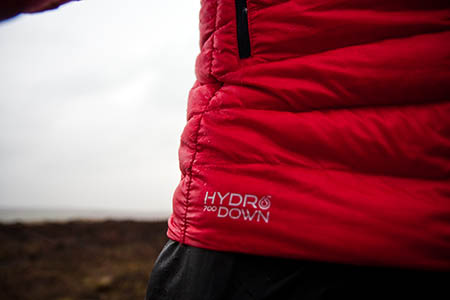
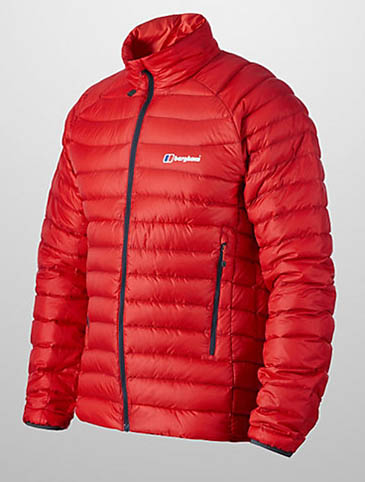
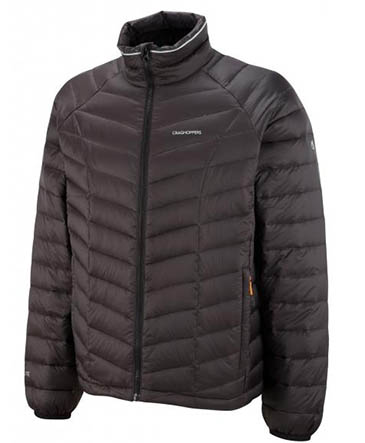
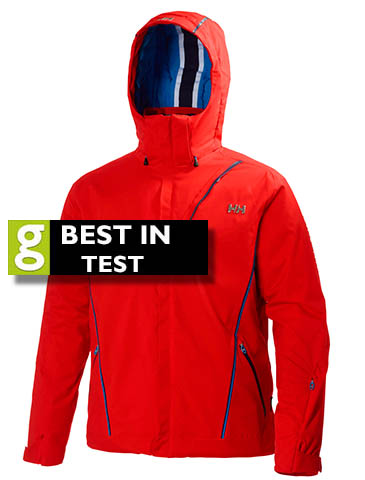
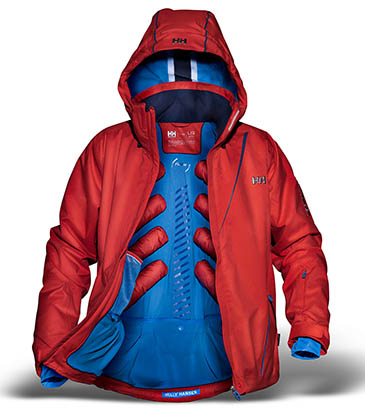
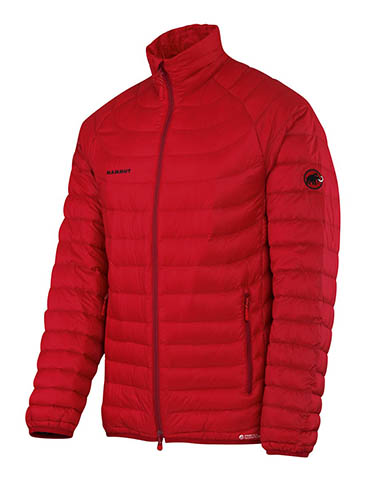
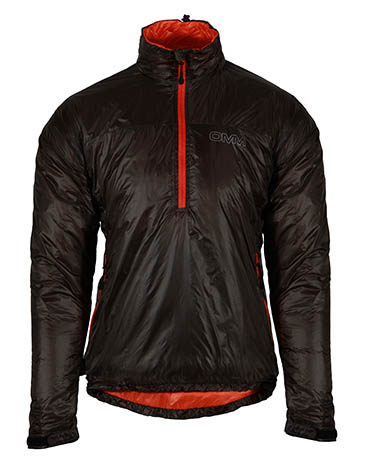
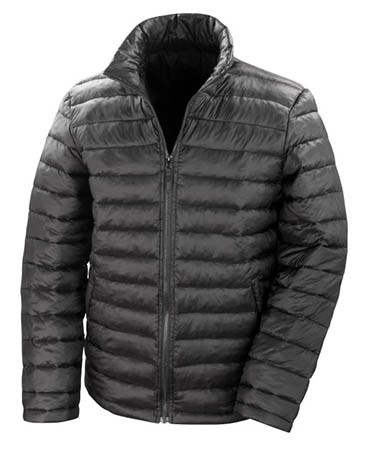
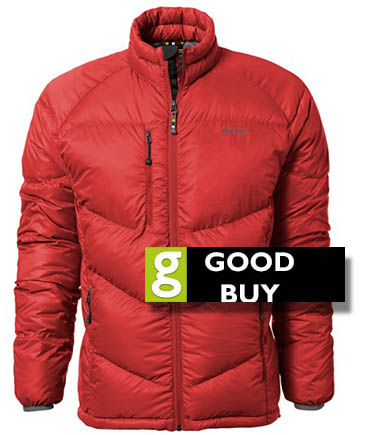
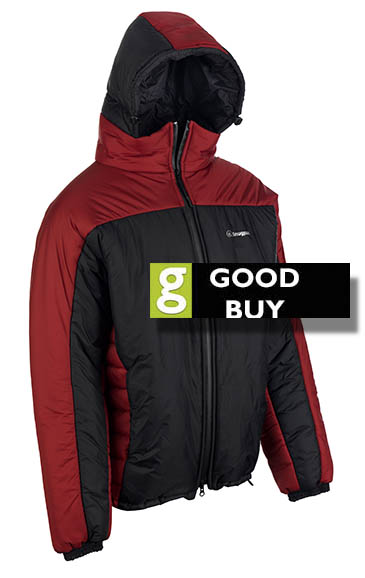
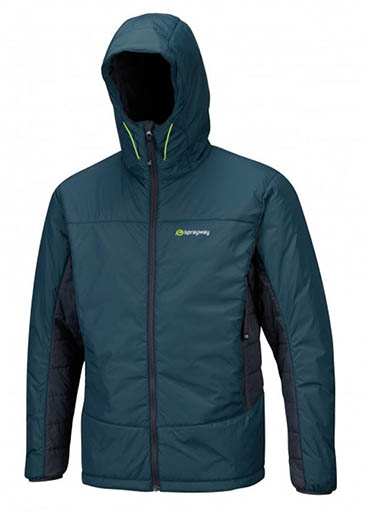
Alex Parr
28 December 2013No Montane jackets?